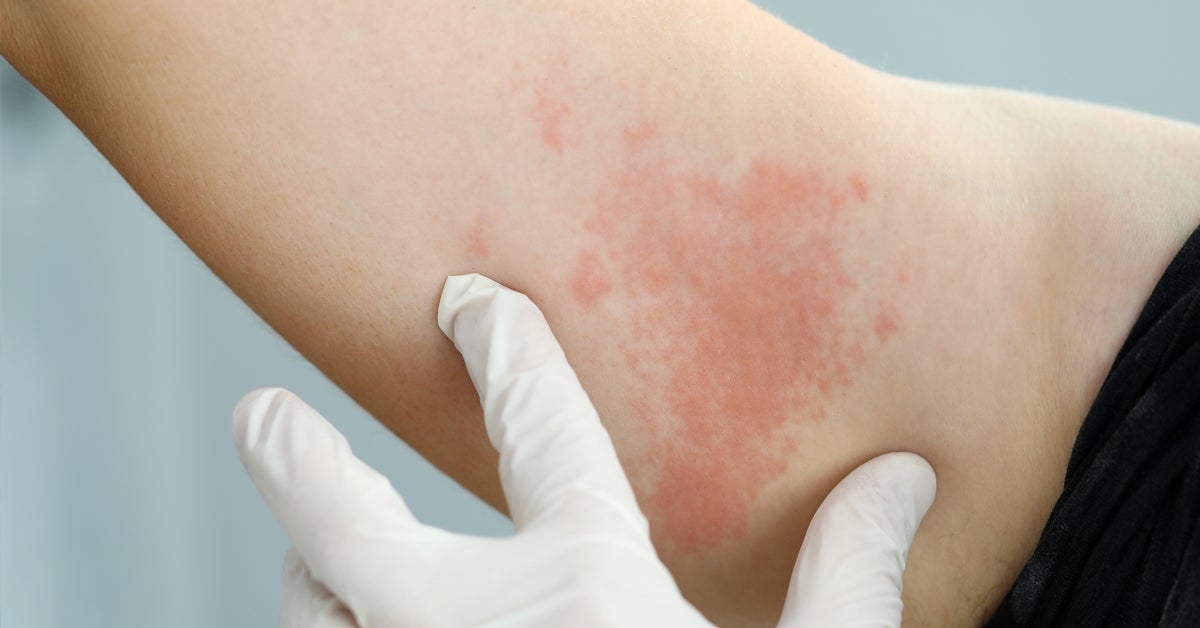Is Dyshidrotic Eczema Contagious? Risk Factors and Prevention - Healthline

Dyshidrotic eczema, or dyshidrosis, is a type of eczema that affects the sides of the fingers, the palms of the hands, and the soles of the feet. It causes an itching, burning sensation along with clusters of fluid-filled blisters.
Dyshidrotic eczema is sometimes related to stress, seasonal allergies, or exposure to certain allergens. Moist hands and feet can also exacerbate this condition. While dyshidrotic eczema isn't contagious, cracked or blistered skin can become infected. Certain types of infections are contagious.
Read on to learn more about dyshidrotic eczema's potential for infection as well as tips for prevention and treatment.
Dyshidrotic eczema isn't contagious, so you can't pass it on or get the condition from someone else. However, irritated skin can become infected, and this secondary infection can be contagious. This means you may pass it on to another person through direct contact.
Dyshidrotic eczema can cause blisters and dry, cracked skin. Scratching your skin can cause further irritation and create small wounds. Your skin may become infected due to cracked skin, fissures, and open wounds that allow viruses, fungi, and bacteria to enter your skin.
Bacteria like Streptococcus or Staphylococcuscan also cause infected eczema. Staphylococcus is a type of bacteria that lives on your skin. It may enter wounds or broken skin to cause a staph infection.
Symptoms of a bacterial infection include:
- pain
- swelling
- crusting
- pus-filled blisters
- itchiness
- redness
- blistered skin
You can treat a bacterial infection with antibiotics or antiseptics.
Candida is a common fungal infection that can occur along with dyshidrotic eczema. You can treat fungal infections with antifungal creams or tablets.
To prevent dyshidrotic eczema from becoming infected, be sure to take care of your skin and overall health. Determine your triggers and avoid them as much as possible.
Preventing or minimizing skin cracks and open wounds can prevent viruses, fungi, and bacteria from entering your skin.
During flare-ups, don't pick or scratch your skin. To reduce dryness and itchiness, keep the affected area moisturized with a lotion that's formulated for eczema-prone skin.
Wear gloves and moisture-wicking socks during extreme weather and at night.
The specific causes of dyshidrotic eczema are unknown, but it's linked to several triggers, such as:
- dry skin
- stress
- metal allergies, such as nickel and cobalt
- season allergies, such as hay fever
- frequently getting your hands or feet wet
- sweaty palms
- hot, humid weather
- irritants like cosmetic or cleaning products
Severe cases of dyshidrotic eczema may cause the blisters to become bigger and cover a larger area of skin. They may spread to the backs of the hands or the tops of the feet.
There are several ways to treat dyshidrotic eczema. Your treatment plan will depend on the frequency and severity of your outbreaks. It may involve a combination of treatments.
Treatment options include:
- corticosteroid cream or ointment
- steroid injection, or oral tablet (for severe outbreaks)
- light therapy (exposing the affected area to ultraviolet light may help soothe the skin)
- antihistamines
- biologic, such as dupixent
- oral immunosuppressants, such as methotrexate and cyclosporin
- anti-itch creams
- immunosuppressant creams
- antibiotics or other medications (if you have an infection)
- acupuncture
- acupressure
Apply an ointment or moisturizer to the affected area several times per day. This helps alleviate discomfort and combat dryness and itchiness.
Moisturizer options include:
Here are some additional tips for managing dyshidrotic eczema:
- Avoid scratching or puncturing your blisters.
- Keep the affected area dry by avoiding frequent bathing, showering, or handwashing.
- Use cool or lukewarm water instead of hot water.
- Avoid irritating products like perfumed lotions, dishwashing soap, or harsh cleaners.
- Wear non-latex dishwashing gloves when washing dishes.
- Wear gloves in hot or cold weather.
- Use relaxation techniques to reduce your stress levels.
- Add vitamin A to your diet.
- Use an emollient instead of soap.
- Soak your hands and feet in cool water.
- Apply a wet, cool compress to the affected area for 15 minutes at a time, a few times daily.
- Follow an eczema-friendly diet.
- Cut your nails short to prevent injuries from scratching.
- Clean your hands before applying ointments or moisturizers.
Dyshidrotic eczema isn't contagious, so you can't pass it on to someone or get it from another person. However, an eczema rash can become infected. To lower your risk for infection, take care of your skin and avoid triggers that worsen your condition.
Talk to a primary care doctor or dermatologist to create an appropriate treatment plan, especially if you have frequent or severe outbreaks.
Comments
Post a Comment